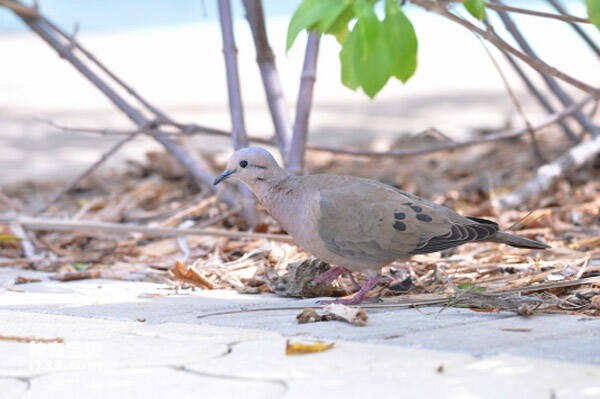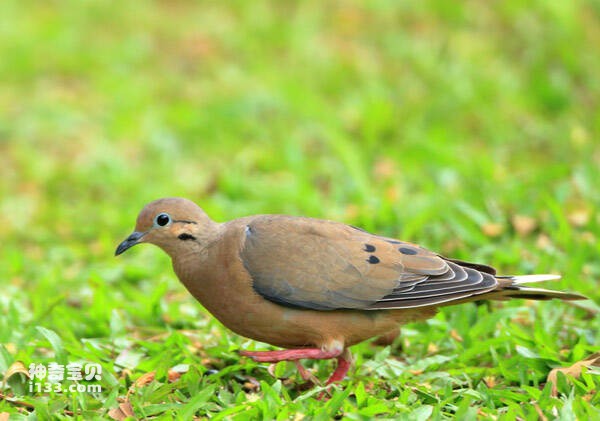Zenaida auriculata,
IUCN
LCBasic Information
Scientific classification
- name:Zenaida auriculata,
- Scientific Name:Zenaida auriculata,
- Outline:Landfowl
- Family:
Vital signs
- length:About 31 cm
- Weight:110-170g
- lifetime:No textual research information is available
Feature
Distribution and Habitat
It is found in Central America, between North and South America, Including Guatemala, Belize, Honduras, El Salvador, Nicaragua, Costa Rica, Panama, Bahamas, Cuba, Haiti, Jamaica, Dominica, Antigua and Barbuda, Saint Vincent and the Grenadines, Saint Lucia, Barbados, Grenada, Trinidad and Tobago and other countries and regions. South America, including Colombia, Venezuela, Guyana, Suriname, Ecuador, Peru, Bolivia, Paraguay, Brazil, Chile, Argentina, Uruguay and the Malvinas Islands (also known as the Falkland Islands).
They occupy most suitable environments, including urban areas, farmlands, pastures, grasslands, and woodlands, but they do not like swamps and dense forests. It is well known that mourning pigeons often nest in trees in cities or near farms, such as New York City, Chicago, and Atlanta, as well as in the forests of the Appalachian and Rocky Mountains.
Appearance
The size of the pigeon is medium, the smaller individual is 31 cm long, and the average weight is 110 ~ 170g. The wings are broadly oval, the head is rounded, and the tip of the long tail is tapered. The pigeon has four toes on each foot, three forward and one backward, and its legs are short and pale red. The beak is dark, usually dark brown, and shorter.
The overall plumage of the pigeon is generally light grayish-brown, with lighter underside wings and pink head and chest. The wings have black spots and the outer tail feathers are white, contrasting strongly with the black feathers on the inner layer. There is a distinct crescent-shaped area of black feathers below the eye. The eyes are black with thin skin around them. Adult males have bright grape purple patches on both sides of the neck and bright pink on the chest and above. The crest of the adult male is distinctly blue-gray. Adult females differ little from males in body size, but generally have more brown plumage than male
Details
Zenaida macroura (Zenaida macroura) is a species of mourning pigeon in the family Dovetail.

Like other doves, the move-cheeked pigeon can always lean down to drink water, while other birds need to look up from time to time during the process of drinking. At dawn and dusk, mourning doves gather at drinking spots to drink. The Pueblos call mourning pigeons "raingivers" or "water bearers" because they go every day to drink where there is water so that people can track them to water. When a predator approaches the nest, the adult pigeon will fall to the ground and pretend to be injured in order to draw the predator away, a behavior known as "pseudo-injury". They flap their wings in front of the predator as if one wing has been broken, steering the predator away from their nest. Once a predator approaches the mourning pigeon away from the nest, it quickly flies away to escape.
Most pigeons travel mainly overland and must travel at least 1,600 km to reach their destination. However, on rare occasions, mourning pigeons also pass through the Gulf of Mexico. In the spring, the northward migration lasts from late March to May; In autumn, the southward migration lasts from late August to November and usually takes place in large groups during the day. Mourning pigeons from Canada migrate the farthest and may overwinter in Mexico or further south. Mourning pigeons that spend the summer in southerly areas stay longer and migrate less often. In the southern part of its range, the mourning dove is a resident bird, settling year-round. However, not all birds migrate, and even in Canada, where winters are very cold, there are individual birds that overwinter, because there are regular bird feeders to provide them with food.

The courtship begins with the noisy flight of the male, then spreads his wings and lowers his head in an arc. After landing, the male bird raises his chest high, nods his head, calls loudly and approaches the female. This mating call can often be heard during the warmer months of the year. If a male bird sees a female he likes, he will chase away other males on the same branch; Until the courtship is successful, it will establish its territory. Mourning pigeon pairs often preen each other's feathers with their beaks.
In general, the pigeon always lays two eggs at a time. Occasionally, however, the female will lay her eggs in the nests of other mourning pigeons, resulting in a nest containing three or four eggs. The eggs are small and white, with a length of 2.6 to 3 cm and a diameter of 2.1 to 2.3 cm. Both male and female birds incubate eggs, with the male incubating from morning to afternoon and the female incubating for the rest of the day and at night. Generally, at least one adult stays in the nest to care for the chicks.
The mottled pigeon is a breed of domesticated pigeon, commonly found in North America. Its feed is mainly multi-grain, more commonly used wheat, sorghum, corn and so on. At least two kinds of feed should be mixed when feeding. In addition to miscellaneous grains, it can also supply green feed and mineral feed such as green vegetables, cabbage and wheat seedlings. Feed should be fed to the pigeons after they return to the loft, so that they can form a conditioned reflex to eat back to the loft, so as to facilitate the homing. In summer and during the incubation of young pigeons, an appropriate amount of salt can be added to their drinking water.
Listed in the International Union for Conservation of Nature (IUCN) ver 3.1:2010 Red List of birds - not threatened.
Protect wild animals and eliminate wild meat.
Maintaining ecological balance is everyone's responsibility!








